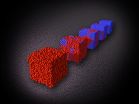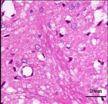(Press-News.org) PROVIDENCE, R.I. [Brown University] — When landlords have followed Rhode Island's law requiring them to protect tenants from exposure to lead, their compliance has significantly reduced blood levels of the toxic metal in children. But in four of the state's major cities, only 20 percent of properties that are covered by the law were in compliance with the law even more than four years after it took effect, according to a study by researchers at Brown University, The Providence Plan, HousingWorks RI, and the Rhode Island Department of Health.
"The law works when it is followed," said Michelle Rogers, a senior project analyst in the Brown University School of Public Health and lead author of the study to be published in the August issue of the American Journal of Public Health.
The sweeping study of the impact of Rhode Island's Lead Hazard Mitigation Law, which took effect in November 2005, found that children living in compliant buildings between 2005 and 2009 had significantly lower blood lead levels than children in noncompliant ones. When the researchers looked at before-and-after test results of children whose buildings were brought into compliance, they found that their lead levels dropped by more than 17 percent on average.
That drop was enough to bring the average child in that sample from 5.2 micrograms per deciliter down to 4.3. That's important because public health officials and physicians consider 5 micrograms to be a level of concern. Too much lead can harm the neurological development of young children.
The Rhode Island Department of Health mandates that children be screened for lead twice by 36 months and collects records through the Lead Elimination Surveillance System.
The study found that among all 16,043 non-exempt properties in Central Falls, Pawtucket, Providence, and Woonsocket, the owners of only 20.3 percent had earned the needed Lead Hazard Mitigation Certificates or met a higher standard. In properties where children lived between 2005 and 2009, the compliance rate was 29.7 percent.
The law requires that landlords of non-owner-occupied buildings built before 1978 that have more than three units take a three-hour lead hazard awareness class, assess and fix any hazards to the property, perform lead-safe maintenance practices, and obtain the certificate from a proper inspector.
In many cases, Rogers said, repainting using commonsense work practices is enough to meet the law's standard and keep children safe.
Still, because of the lack of compliance with the law and widespread exemptions, more than 20 percent of children in the four cities who live in dwellings without a certificate have had at least one test above the 5 microgram level, the study showed. One child in 30 in such homes has tested above 10 micrograms.
The average blood lead level among children in homes without a certificate is 3.3 micrograms per deciliter.
Exposure in exempt properties
The law exempts many dwellings, such as owner-occupied single-family homes. More than two-thirds of the residences in the four cities analyzed were therefore exempt from the law.
But the researchers looked at the blood tests of children living in those properties, and found that lead exposure is a problem there too, although somewhat less so. More than 20 percent of children living in exempt dwellings had at least one test above 5 micrograms, and 2.8 percent had a test above 10 micrograms, according to the study data.
The results prompted the authors to raise the question of whether the law should be expanded to all dwellings.
"There are so many properties that are exempt that young children are living in," Rogers said. "They are still being exposed. For children to grow up healthy and ready to learn, we need stricter enforcement of the lead compliance regulations and legislation that covers all properties where children live."
INFORMATION:
The study's other authors are James Lucht, formerly of The Providence Plan, and Alyssa Sylvaria of the Providence Plan, Jessica Cigna of Housing Works RI, Robert Vanderslice of RIDOH, and Dr. Patrick Vivier of Brown University.
The study was supported by a grant from the U.S. Department of Housing and Urban Development to The Providence Plan.
R.I. lead law effective, often ignored
2014-07-07
ELSE PRESS RELEASES FROM THIS DATE:
College athletes with abusive coaches more willing to cheat
2014-07-07
WASHINGTON — College athletes who have abusive coaches are more willing to cheat in order to win than players with more ethical coaches, according to new research published by the American Psychological Association and based on surveys from almost 20,000 student athletes at more than 600 colleges across the country.
"Ethical behavior of coaches is always in the spotlight," said lead researcher Mariya Yukhymenko, PhD, a visiting research associate at the University of Illinois at Chicago. "Our study found several negative effects related to abusive coaches, including ...
Penn researchers: Consider the 'anticrystal'
2014-07-07
For the last century, the concept of crystals has been a mainstay of solid-state physics. Crystals are paragons of order; crystalline materials are defined by the repeating patterns their constituent atoms and molecules make.
Now physicists at the University of Pennsylvania and the University of Chicago have evidence that a new concept should undergird our understanding of most materials: the anticrystal, a theoretical solid that is completely disordered.
Their work suggests that, when trying to understand a real material's mechanical properties, scientists would be ...
BGI presents a high-quality gene catalog of human gut microbiome
2014-07-07
July 7, 2014, Shenzhen, China— Researchers from BGI, working within the Metagenomics of the Human Intestinal Tract (MetaHIT) project, and in collaboration with other institutions around the world , have established the highest quality integrated gene set for the human gut microbiome to date- a close-to-complete catalogue of the microbes that reside inside us and massively outnumber our own cells. While the roughly 20,000 genes in the human genome have been available for over a decade, the gene catalog of the microbiome, our much larger "other genome", has to date been much ...
Gene therapy and the regeneration of retinal ganglion cell axons
2014-07-07
Because the adult mammalian central nervous system has only limited intrinsic capacity to regenerate connections after injury, due to factors both intrinsic and extrinsic to the mature neuron, therapies are required to support the survival of injured neurons and to promote the long-distance regrowth of axons back to their original target structures. The retina and optic nerve are part of the CNS and this system is much used in experiments designed to test new ways of promoting regeneration after injury. Testing of therapies designed to improve RGCs viability also has direct ...
Changing Antarctic winds create new sea level threat
2014-07-07
New research shows projected changes in the winds circling the Antarctic may accelerate global sea level rise significantly more than previously estimated.
Changes to Antarctic winds have already been linked to southern Australia's drying climate but now it appears they may also have a profound impact on warming ocean temperatures under the ice shelves along the coastline of West and East Antarctic.
"When we included projected Antarctic wind shifts in a detailed global ocean model, we found water up to 4°C warmer than current temperatures rose up to meet the base of ...
Visualization of peripheral nerve regeneration
2014-07-07
Researchers at the Institute of Polymer Science and Engineering in Taipei, Taiwan, led by Dr. Hsu have been involved in peripheral nerve regeneration research for more than ten years. Dr. Hsu and her team have focused on development of polymeric nerve conduits to facilitate peripheral nerve regeneration. To better translate the research from animal experiments to human therapies, they have recently paid more attention on clinically available methods to visualize the peripheral nerve regeneration process.
This mini-review in Neural Regeneration Research (Vol. 9, No. 10, ...
China's hidden water footprint
2014-07-07
China's richest provinces have an outsized environmental impact on the country's water-scarce regions, according to new research from the International Institute for Applied Systems Analysis (IIASA) and the University of Maryland.
Many developed regions in China are not only drawing from their own water resources but also contributing to water depletion in other water-scarce regions of the country through imports of food and other water-intensive goods, according to the new study published in the journal Environmental Science & Technology. This has environmental impacts ...
DNA origami nano-tool provides important clue to cancer
2014-07-07
Researchers at Karolinska Institutet in Sweden have headed a study that provides new knowledge about the EphA2 receptor, which is significant in several forms of cancer. This is important knowledge in itself – but just as important is how this study, which is published in the highly respected journal Nature Methods, was conducted. The researchers used the method of DNA origami, in which a DNA molecule is shaped into a nanostructure, and used these structures to test theories about cell signalling.
It was previously known that the EphA2 receptor played a part in several ...
Dental pulp stem cells promote the survival and regeneration of retinal cells after injury
2014-07-07
Researchers at the University of Birmingham, UK, led by Dr. Ben Scheven, Dr. Wendy Leadbeater and Ben Mead have discovered that stem cells isolated from the teeth, termed dental pulp stem cells (DPSC), can protect retinal ganglion cells (RGCs) from death following injury and promote regeneration of their axons along the optic nerve.
RGC loss is the leading cause of blindness and can arise through traumatic injury or degenerative diseases such as glaucoma. Neurotrophic factors (NTFs), which travel along the axon of a neuron to a cell body act as survival signals however, ...
Houshiheisan maintains stabilization of the internal environment of neurovascular units
2014-07-07
Cerebral ischemia not only injuries neurons, but also involves the glial cells that provide a supportive scaffold to which the neurons are attached and the microvessels that provide energy for nervous tissue. Therefore, protection of a single neuron is not sufficient to recover nervous function, and more attention should be paid to maintenance of the function of entire neurovascular units. Houshiheisan compound is one of effective traditional Chinese compound prescriptions for stroke. The prescription is composed of wind-dispelling (chrysanthemun flower, divaricate saposhnikovia ...



